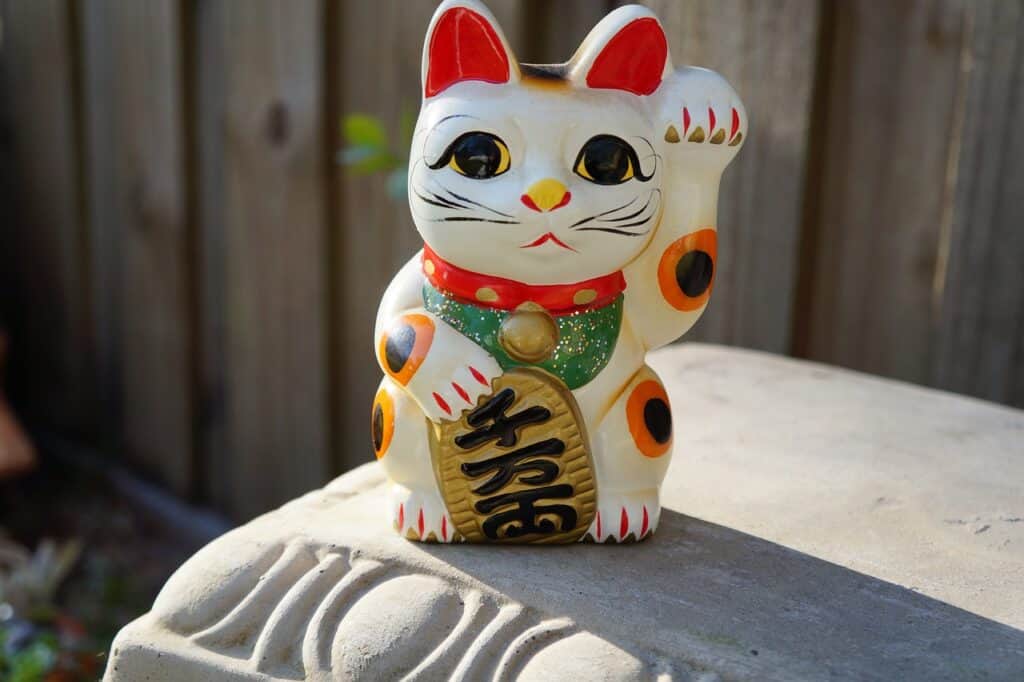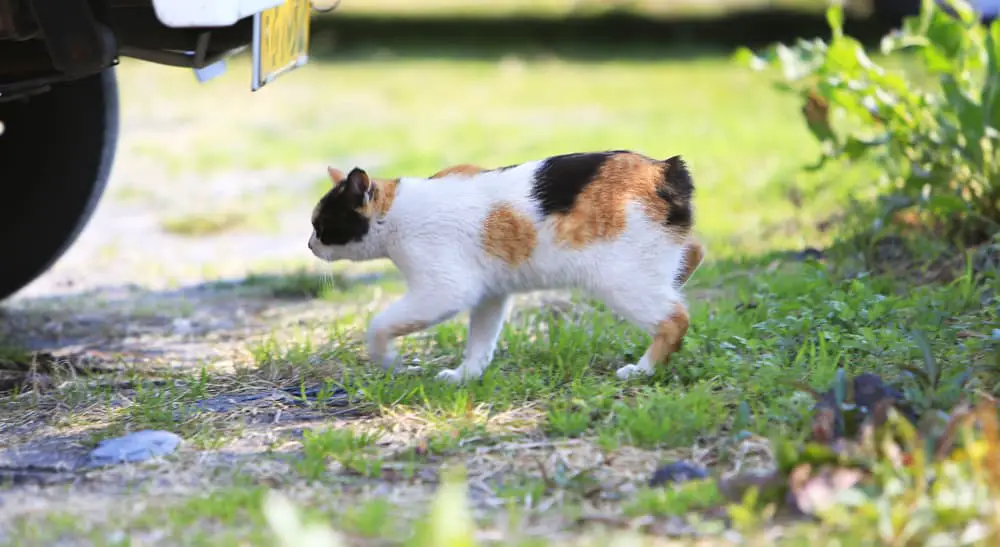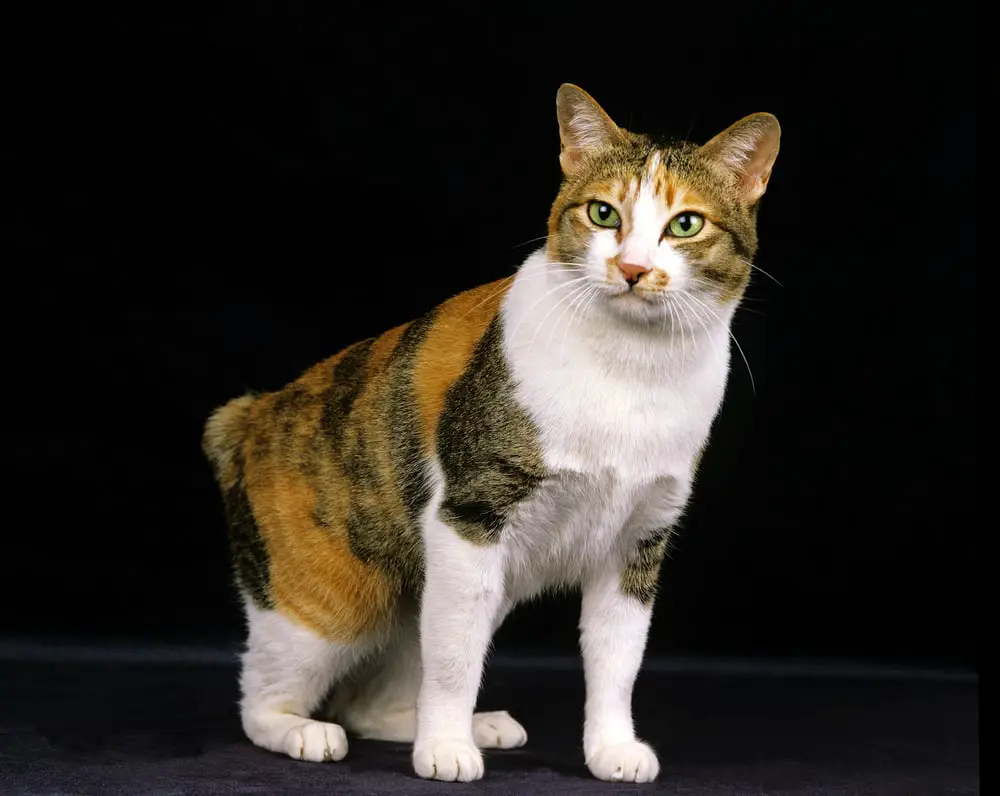The kinked, short, bunny-like tails of Japanese bobtail cats make them hard to miss. But they are not just one of the cutest existing cat breeds – they also possess a captivating, affectionate, and intelligent personality.
For this reason, this energetic cat makes a great pet for all households. They are surprisingly easy to care for, as they are low-shedding and easy to groom.
Japanese Bobcats are also considered lucky in their country of origin, Japan. You will have seen them as Maneki-Neko (“beckoning cat”) in shopfronts, and they are also the inspiration for the internationally beloved Sanrio creation, Hello Kitty.
Thinking of getting one? Here’s all you need to know about this wonderful breed.

An Overview of the Japanese Bobtail Cat
| Height | 8-9 inches |
| Weight | Males: 7 – 10 pounds, Females: 6 – 8 pounds |
| Lifespan | 9-15 years |
| Origin | Japan |
| Temperament | Affectionate, playful, sociable, outgoing, charming, clever, easygoing, loyal |
| Activity Level | Very high |
| Compatibility | High compatibility with kids and other pets |
| Coat | Short and long |
| Shedding | Seasonal |
| Colors | White, black, red, gray, silver, cream, brown, sable |
| Patterns | Solid, bi-color, tabby, calico |
| Allergy-Friendly? | Mostly |
| Vocalness | Highly vocal |
| Price | $500-$2,000 |
History
The Japanese bobtail cat is a natural breed that originates in Japan and other parts of Southeast Asia. The earliest record of the cat’s existence dates back to the 6th century.
The Japanese used these cats for controlling the rat population, threatening the thriving silkworm trade. Through this practical function, the Japanese bobtail cat became a revered and beloved animal.
A large number of antique paintings and woodcut prints depict the cat, which is also considered a lucky animal.
It’s also said that the Japanese cat was so loved by the Chinese royal family that they were considered to be luxury pets that were a part of the ruling class. Although the cat was introduced to the U.S. in the ’60s, they are not commonly seen outside Japan.

Temperament
If you want a housecat that can socialize easily with both humans and other animals, the Japanese bobtail is an ideal choice. Highly intelligent, friendly, and social, these cats are charming pets who adore being lavished with the attention of their human parents.
The energetic temperament of the cat will begin to shine through when it is very young, and this will persist through most of its adult life. For this reason, bobtails require a lot of activity and entertainment. They are also known to bring toys to their pet parents when they want to play.
Another one of the common characteristics of a Japanese bobtail is its feisty, stubborn nature. They are inclined to consider their living space their dominion, for which reason they can be quite demanding in terms of seeking attention and affection from their pet parents.
This breed of cat also likes to assist their humans in whatever tasks they might undertake, which, although it might seem disruptive, is only further proof of how loving they are.
Personality
Japanese bobtails are, as we have established, very fond of attention – to the point where in order to be showered with attention, they will sometimes treat even strangers with an unexpected amount of affection.
They are also highly talkative, having a “chirping” voice that has been described as having a singsong sound. They learn their name quickly, know how to meow to communicate, and constantly entertain you with their antics.
However, this all means that a Japanese bobtail cat will never do well in the home of a distant or aloof pet parent. They are not mild creatures by any means and should not be neglected. If you get one, remember to give them the love they deserve!

Appearance
The distinct appearance of these cats is what makes them the dream pet for many cat lovers.
Tail
The defining physical trait of any Japanese bobtail is its extremely short and stubby bobbed tail, it is one of the cat breeds with short tails that is most recognizable. In fact, the tail of these cats looks more like a bunny’s tail than a cat’s. Usually, no longer than 3 inches long, every Japanese bobtail cat’s tail is different, meaning no two are alike.
Some people think that the bobtail is a congenital defect, but this is a misconception. This breed of cat has all of its tail vertebrae – they are just very short. The bobbed tails are usually kinked or curled to one side.
Body
They are medium-sized cats, usually weighing at least 5 pounds and no more than 10 pounds, with males generally being heavier. With lean, long torsos, bobtails also have strong, muscular builds.
Their front legs are shorter than their back legs, and they have very distinct facial features: oval eyes, noticeable whisker breaks, long noses, and high cheekbones. Males also have jowls.
The ears of the cat are typically upright and spaced widely apart, and sitting at right angles.
Coat
They tend to have two types of coats: short and long. While the coat can be bi-color, solid, tabby, or calico, the most commonly seen coat color is white with a van pattern (spots).
Their coats are silky smooth and do not shed easily. They are easy to groom for this reason. Unfortunately, Japanese bobtail cats are not known to be hypoallergenic.

Grooming
As these are a cat breed that doesn’t shed and has no undercoat, they are not prone to matting and do not need to be groomed fastidiously. You can get away with brushing them just once a week to get rid of dead hairs. That said, your pet might require more brushing during the peak shedding seasons of fall and spring.
Living Conditions
The agile and athletic bobtail cat requires a lot of exercises, which they partake in enthusiastically. You won’t have to motivate them to get moving. On your part, you must ensure that your cat has access to interactive toys and a scratching post.
But most of all, they simply love to play fetch, and you will find that training them to do this is quite easy.
Thinking of introducing one of these cats into a home already populated with pets and/or children? Thankfully, they socialize quite easily. However, as with any other domestic animal, it’s recommended to socialize your Japanese bobtail when they are still a kitten to prevent issues.
Care
The most important thing to understand about taking care of these cats is that they require lots of attention and exercise. If you can provide this, you will have a happy pet. However, if you are someone who does not do well with clingy pets, this cat is not for you.
As a highly interactive breed, they require many toys and entertainment options. They simply love to play, so don’t deprive them of playmates.
In fact, you might even consider getting a pair of kittens together instead of just the one – it’s a surefire way to ensure that your kitty will have a fulfilled life because they are known to develop especially close bonds with their littermates.
Be wary of leaving your Japanese bobtail cat alone – they don’t handle that well as they are so social. So once again: if you’re not able to be an actively engaged pet parent, this might not be the right cat for your household.
That said, if you have a large family consisting of children and pets who can keep your cat entertained, you should be good to go.
Diet
These cats should be fed cat food of high quality, preferably one recommended by your vet. It’s also important to note that, although they love to exercise, they also love to eat and are prone to snacking heavily. This means you’ll have to monitor their food intake carefully to prevent obesity.
Health Issues
One of the best things about these cats is that they do not typically carry any genetic disorders. They live between 9 and 15 years and are known to be one of the healthiest and strongest cat breeds to exist.
Price
Because of their rarity, these cats tend to come at a high price, typically costing between $500 and $2,000, depending on where you live and the availability of breeders. But although they might be expensive, the hardy, disease-resistant Japanese bobcat is unlikely to rack up high veterinarian costs.
Final Words
Any cat lover is familiar with the many wonders of a Japanese bobtail cat. If you actually manage to find and adopt one, you’ll certainly be one of the lucky ones. But remember to lavish your cat with the love, attention, and affection they crave and certainly deserve.
We wish you the best of luck with your new baby!
